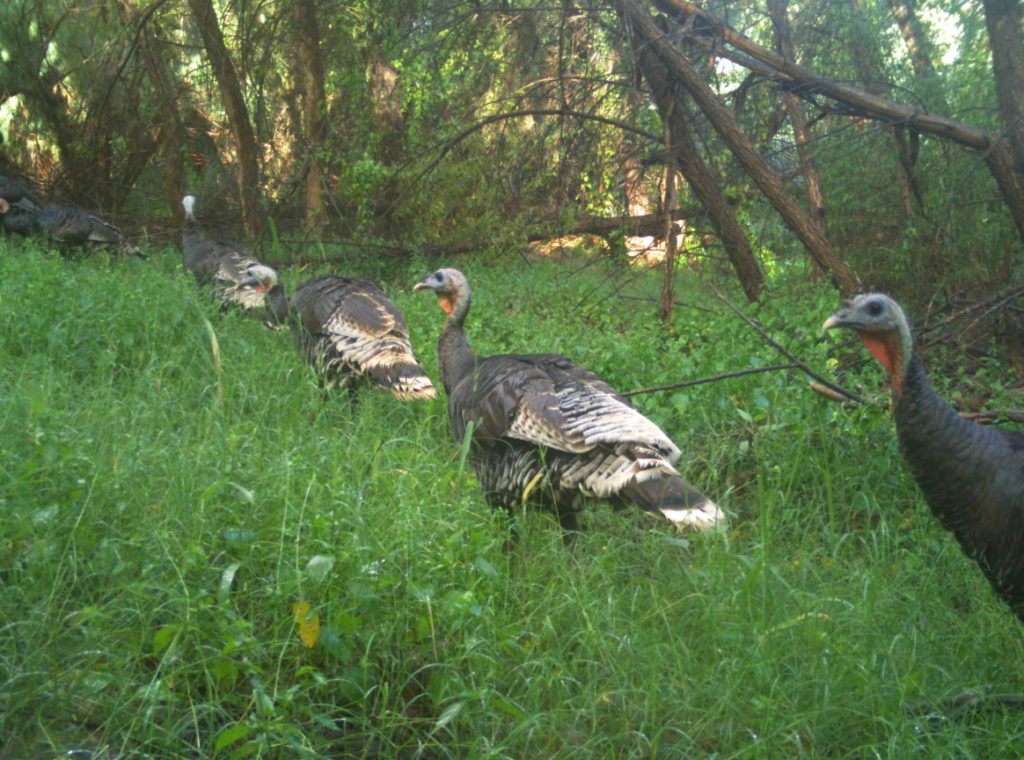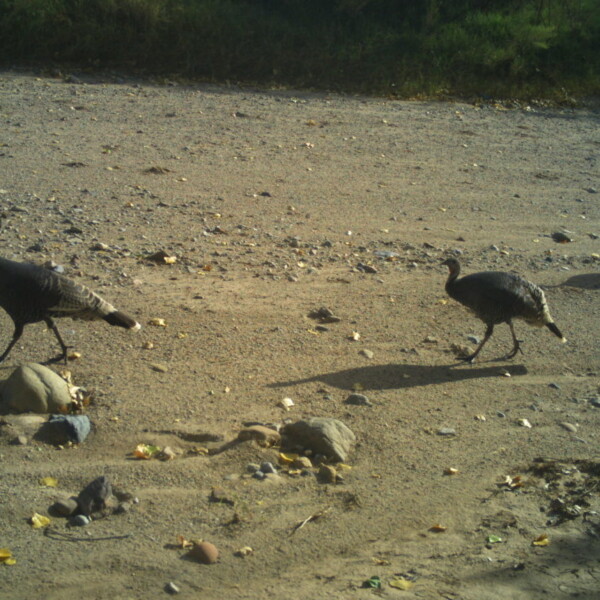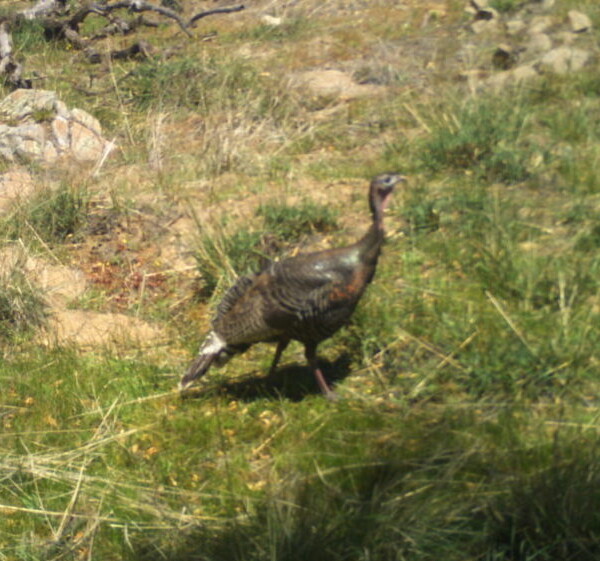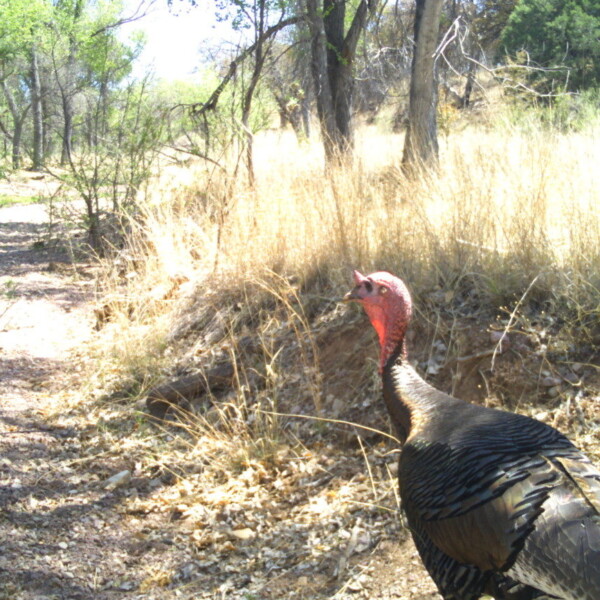For today’s Creature Feature, we’re highlighting the Gould’s turkey, a subspecies of wild turkey that’s native to Arizona and slowly returning to our mountain ecosystems after being overhunted. So instead of eating this turkey for Thanksgiving, let’s marvel at these fun facts — a friendlier way to celebrate the upcoming holiday season and this endemic Sky Island species.
Description
The Gould’s turkey (Meleagris gallopavo mexicana) is the largest of the three wild turkey subspecies (Merriam’s, Rio Grande, and Gould’s) found in Arizona. It has a long feather-free neck and slightly curved beak, a fleshy red-orange wattle, long legs and large feet, and a gray body with white-tipped rump and tail feathers. Some Gould’s turkeys also have red-orange accent feathers along their breast.
We have also detected Gould’s turkeys with leucism (partial pigmentation loss) and albinism (full pigmentation loss) in the Sky Islands. In this photo, the coloring of the Gould’s is mostly white with striking brown tail feathers and black speckling.
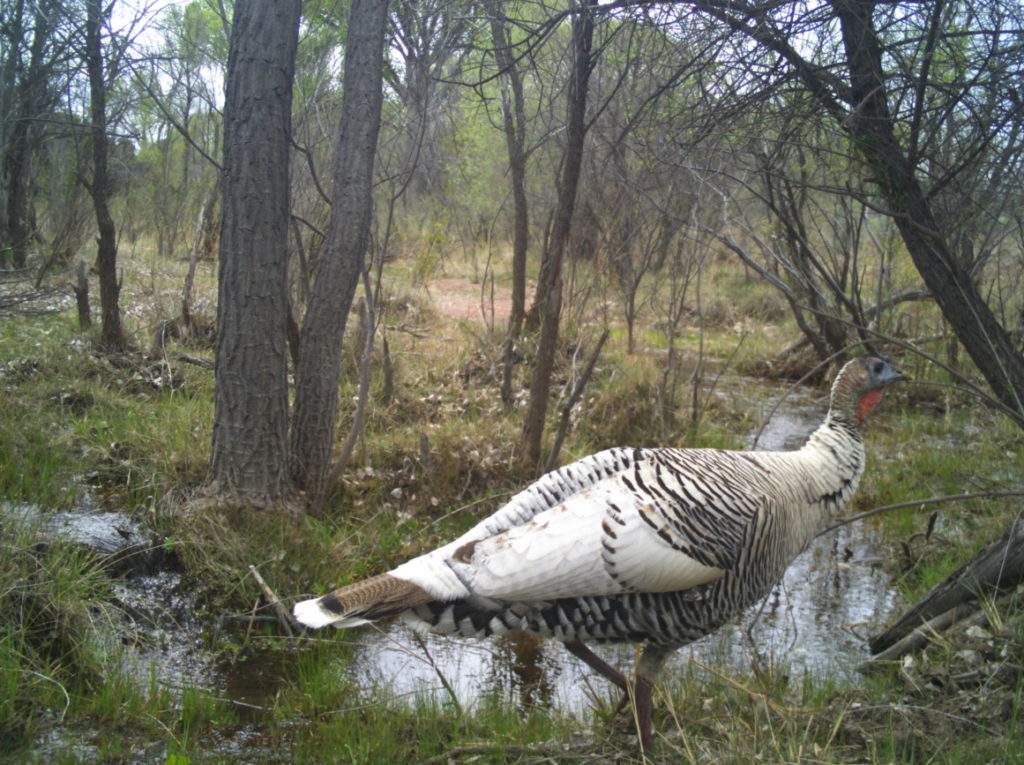
Habitat
Gould’s turkeys are endemic to the Sky Island region, meaning they are only found throughout southeastern Arizona, western New Mexico, and northwestern Mexico. They prefer forested mountain habitats but can live at elevations between 3,500 and 10,000 feet — typically, they are found at lower elevations in the U.S. and higher elevations in Mexico along the Sierra Madre Occidental.
Historically, the Gould’s turkey lived in Arizona’s Sky Island mountain ranges, but overhunting pushed their populations to near extinction in the early 1900s. Small but recovering populations of Gould’s turkey can be found throughout Arizona’s transboundary mountain ranges, including the Huachuca Mountains.
Behavior
Gould’s turkeys live in a “home range” that they share with multiple turkey flocks. (A flock is a group of same-sex turkeys that travel together and have their own pecking order and hierarchies.) They choose ranges that are close to water and have ample food sources.
Breeding season starts in April and lasts until June. After mating, a hen will lay a clutch of 10 to 12 eggs and incubate them on her own until baby turkeys, called poults, hatch around 28 to 30 days later.
Fun fact: This is a lengthy process! It can take a hen two weeks to lay a dozen eggs. To protect her eggs until she’s ready to incubate them, which she does all at once, she will cover them with leaves.
At birth, poults (also called a brood once they’ve all hatched) bond closely with their mother and learn how to communicate with her, follow her, and feed with her. Poults can fly at two weeks and roost in trees to avoid predators at three weeks. At four months old, poults separate into same-sex flocks and join the larger population of Gould’s turkeys. By winter, they are fully mature.
Fun fact: Male and female turkeys keep to their flocks. They do not commingle until mating season.
Diet
Like other wild turkey species in the Sky Islands, Gould’s turkey eat mostly grasses and grass seeds, tree and brush plant matter, oak acorns, and the occasional fruit. For the first few weeks after birth, poults will also eat insects.
Status
By the early 1900s, the Gould’s turkey had been hunted to near-extinction in Arizona, and populations in New Mexico and northern Mexico dwindled. Hunting regulations and limits were introduced to shield turkey species across North America from overhunting, but it took decades of conservation work before the Gould’s turkey recovered in number. A couple thousand Gould’s turkeys are now thought to exist in the Sky Islands.
Want more INFO about REINTRODUCING Gould’s turkey to the Sky Islands? Check out this blog.
Identification Tips
Here are some physical traits to look for when identifying a Gould’s turkey:
- Long legs
- Long center-tail feathers with white tips
- Narrow, slightly curved beak
- Brown and white body plumage, sometimes with a colorful metallic sheen
- Fleshy neck with pale or vibrant red-orange wattle
- Fluffy white feathers along the rump that have an “eyelash” look

